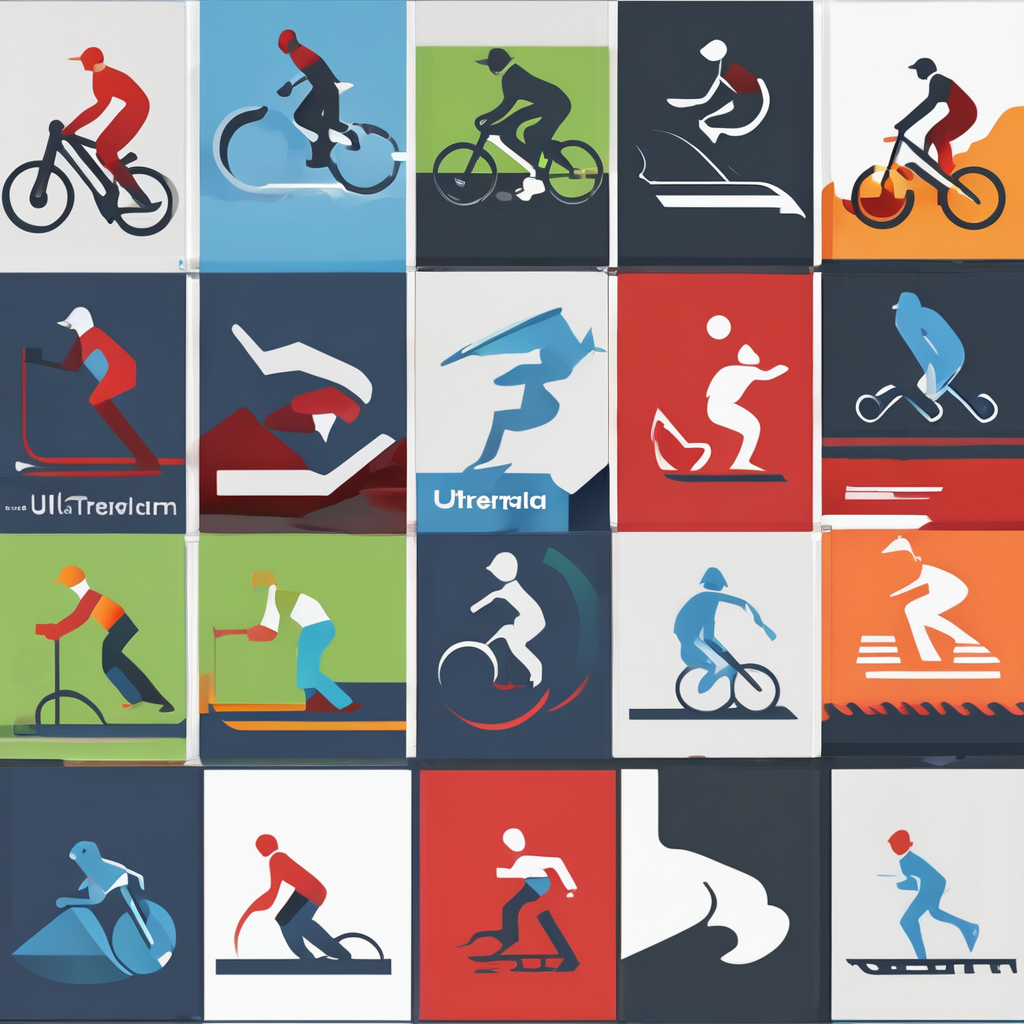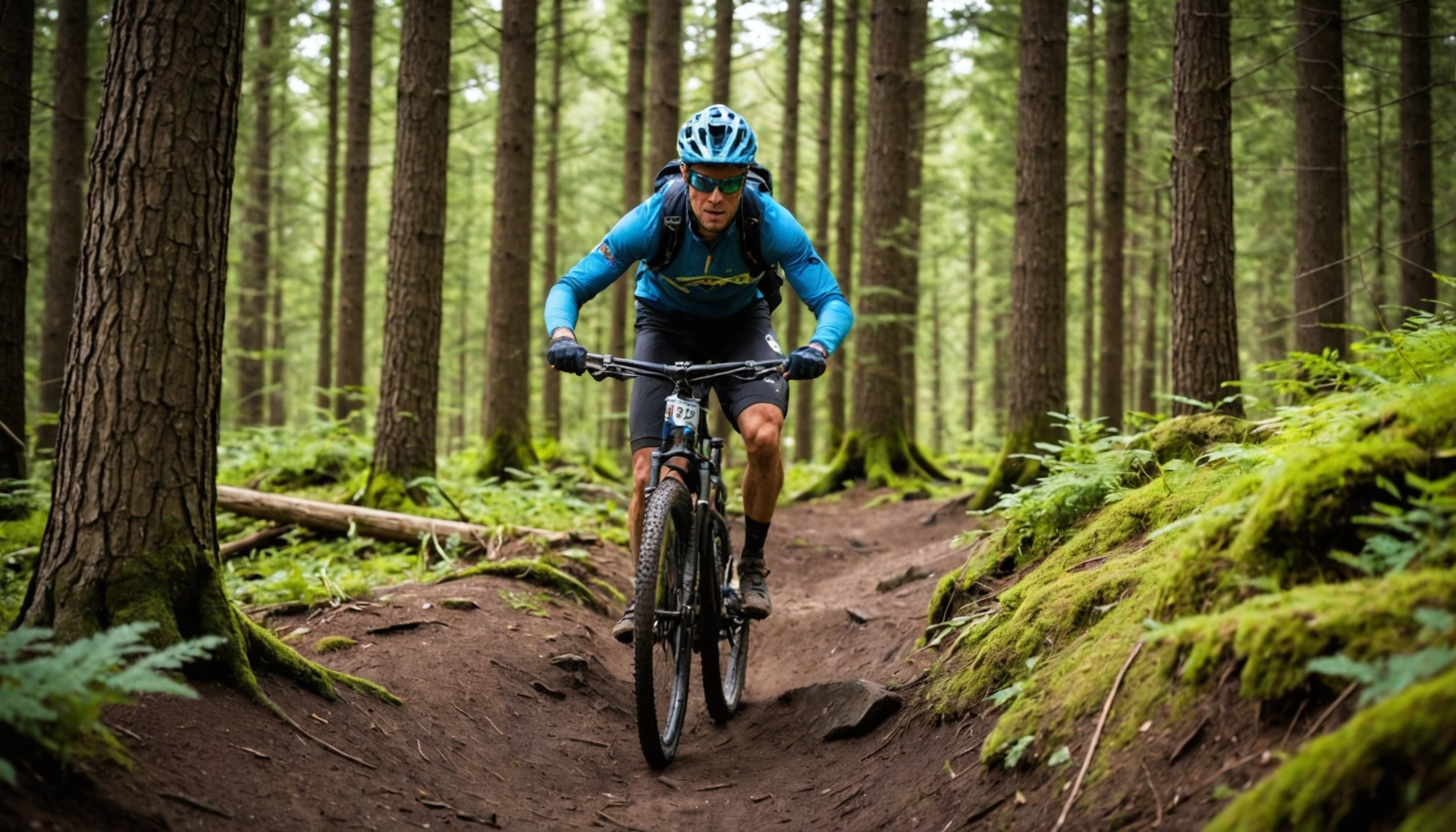Training Techniques for Endurance
When tackling longer mountain biking rides, endurance training is crucial for success. Aerobic conditioning is essential, as it helps build the stamina needed for sustained physical activity. Without a well-developed aerobic base, riders may find themselves quickly exhausted on extended trails.
To fortify cardiovascular stamina, incorporating specific exercises is vital. Activities such as cycling at a steady pace for prolonged periods improve the heart’s efficiency. These workouts not only enhance oxygen intake but also increase the body’s ability to sustain energy over time.
Additional reading : Maximize your game: harnessing the benefits of plyometric push-ups for rugby athletes
Integrating mountain biking workouts with interval training can further enhance endurance. This technique involves alternating between high-intensity bursts and lower intensity recovery phases within a workout. It’s an effective way to boost both strength and cardiovascular capabilities, offering the strength and endurance synergy needed for demanding terrains.
To maximize physical conditioning, a balanced routine that includes these training techniques can be highly beneficial. By focusing on these tailored approaches, mountain bikers can significantly improve their performance on challenging rides and endure longer, more strenuous routes. This well-rounded strategy not only prepares the body efficiently but also ensures enjoyable and safer rides.
Also read : Empower your dance: the ultimate safe and effective strength training guide for dancers
Strength Building Exercises
Building strength and endurance is key for mountain biking, allowing cyclists to power through challenging terrains. Strength training enhances muscular endurance, providing stability and power for longer, more demanding rides.
Upper Body Strength
Enhancing upper body strength is critical to maintaining stability, particularly during steep climbs. Incorporate exercises like push-ups and dumbbell rows to bolster shoulder and arm strength. These movements aid in stabilising the body on uneven paths. Recommended resistance routines also include pull-ups and shoulder presses, which focus on essential muscle groups for effective biking.
Core Strength
The core is the foundation for balance and control on a bike. Planks and Russian twists can effectively boost abdominal and back strength. This stability is crucial when navigating tight turns or rocky trails. Regular incorporation of these exercises fosters stronger posture, reducing the risk of fatigue during rides.
Lower Body Strength
Targeted leg workouts, such as squats and lunges, are quintessential for enhancing power. These exercises develop the biking-specific muscles necessary to tackle rough terrains. Strong quadriceps and hamstrings enable cyclists to gain and maintain momentum, ensuring a more efficient and enjoyable ride. Achieving muscular endurance in the lower body maximises energy use, allowing cyclists to explore more demanding routes with confidence.
Nutrition and Hydration Strategy
Prioritising nutrition for bikers is paramount in achieving peak performance in endurance rides. Proper nutrition fuels sustained energy levels, with key nutrients like carbohydrates, proteins, and healthy fats supporting both endurance and strength. Before hitting the trail, ensure your body is prepared by consuming a balanced meal with complex carbohydrates for gradual energy release. Muscles can work efficiently and stave off early fatigue when glycogen stores are topped up.
Incorporating a sports diet requires planning pre-ride and post-ride nutrition strategies. A post-ride recovery meal rich in protein aids in muscular repair, while carbohydrates replenish depleted glycogen stores. For optimal recovery, try including food sources like lean meats, leafy greens, and whole grains.
Hydration is equally critical; water alone might not suffice for lengthy rides. Strategically incorporating hydration tips, such as electrolyte-infused drinks, helps maintain fluid balance and prevent dehydration. Begin hydrating well before the ride and continue sipping fluids regularly during your journey.
By focusing on these hydration and nutrition tactics, bikers can ensure they maintain endurance and resilience on demanding routes. Remember, properly fuelling your body is as important as the physical training you undertake.
Mental Strategies for Tough Terrain
Navigating challenging trails requires more than just physical prowess; mental endurance is just as crucial. To effectively manage these demands, setting realistic goals can aid in maintaining motivation. Consider breaking the ride into smaller, achievable milestones to sustain momentum. This not only prevents feeling overwhelmed but also boosts biking motivation.
Mindfulness techniques can enhance focus, crucial when faced with natural obstacles. Deep breathing exercises and maintaining a present mindset help riders stay alert, promoting effective trail navigation. Incorporating psychological techniques like visualisation can prepare one for difficult segments, fostering confidence and readiness.
Overcoming mental fatigue is vital during strenuous climbs. Acknowledging the challenge and focusing on each pedal stroke redirects energy and determination. Utilising self-encouragement phrases can provide a mental lift, propelling the rider forward. Embracing these strategies enhances overall psychological techniques and ensures a stronger ride mentally and physically.
Incorporating these mental strategies helps cyclists tackle obstacles with renewed vigour and resilience. Whether you’re facing a tricky incline or a long stretch, your mind is as powerful a tool as your legs. With practice, these techniques become second nature, ensuring that mental stamina matches physical strength.
Equipment Considerations for Endurance Riding
When embracing endurance riding, ensuring the right mountain biking gear can significantly boost performance and comfort. Proper bike setup is integral to enhancing riding efficiency and reducing fatigue.
Proper Bike Fit
A well-fitted bike is crucial for prolonged riding comfort. Adjusting the saddle height ensures optimal leg extension, reducing knee strain. Handlebar placement impacts posture, with the right angle preventing unnecessary shoulder and back discomfort. Regularly double-check these adjustments to maintain comfort and performance throughout your ride.
Essential Gear for Long Rides
Bringing essential gear can transform your endurance experience. Items such as lightweight tools for quick repairs and high-energy snacks are vital. A quality hydration pack helps manage fluid levels easily. Balancing bike weight and gear is critical; unnecessary items can impede speed and endurance.
Tire Selection and Maintenance
Selecting the right tires can make or break an endurance journey. Durable tires with appropriate tread patterns provide better traction on rough terrain, preventing slips and punctures. Regularly inspect tires for wear and tear, maintaining optimal performance and safety. Ensure they’re properly inflated to enhance riding efficiency and minimise rolling resistance.
Real-Life Experiences and Anecdotes
Endurance challenges in mountain biking push both physical and mental boundaries. Many seasoned bikers share personal stories of how they navigated tough trails, proving that perseverance is key. Take, for example, a seasoned rider like Emma, who faced steep trails with grueling inclines. Initially daunted, she leveraged interval training to boost strength and endurance synergy, conquering those intimidating paths over time.
Another biker, Jake, recounted his dramatic drop in performance due to neglecting hydration needs during a long ride. His tale underscores the importance of proper nutrition for bikers and hydration strategies, inspiring others to never underestimate these aspects. Jake’s recovery story, highlighting his adaptation to a sports diet, demonstrates how overcoming such mistakes can inspire profound improvements.
Inspirational anecdotes also abound regarding mental endurance. For instance, cyclist Tom shares how setting realistic goals improved his biking motivation. By visualising success and practicing mindfulness techniques on the trail, he tackled overwhelming inclines with renewed focus.
These real-life experiences from bikers emphasize the significance of adopting comprehensive endurance training, physical conditioning, and psychological strategies, reaffirming that challenges pave the way for profound growth and accomplishment.











